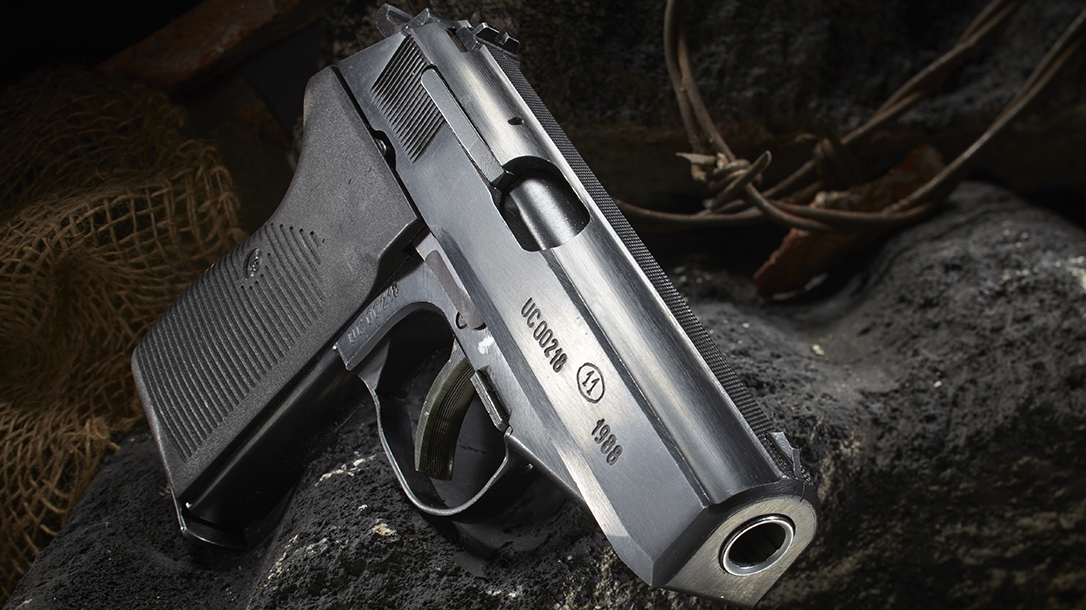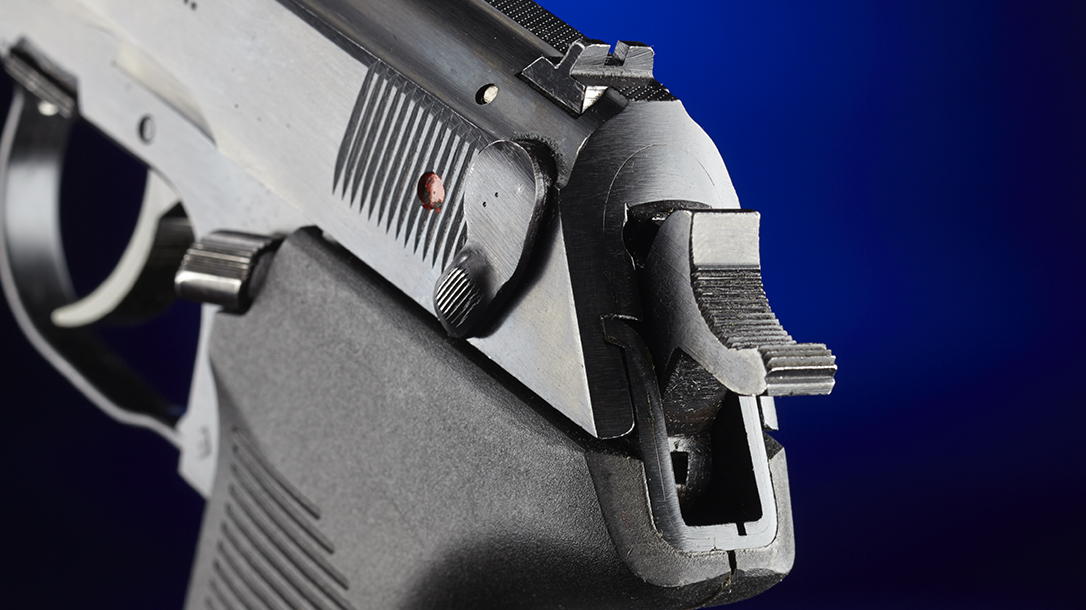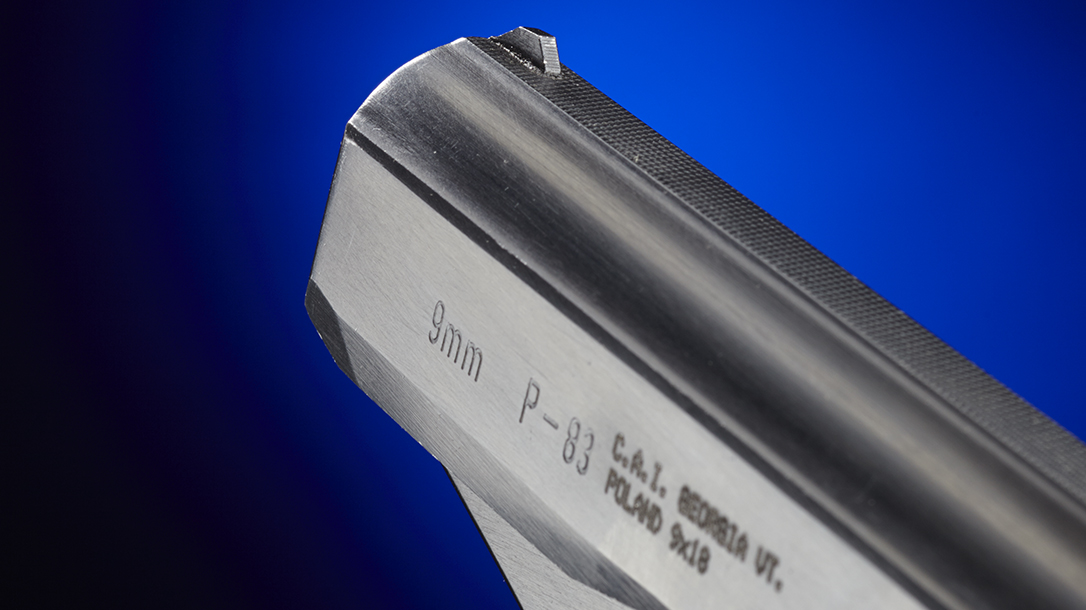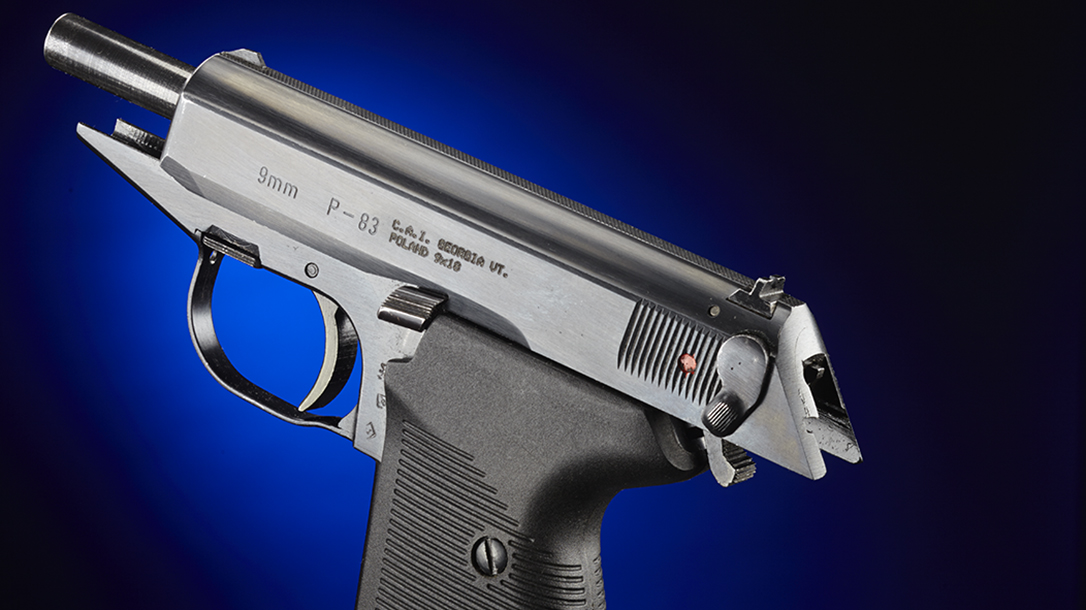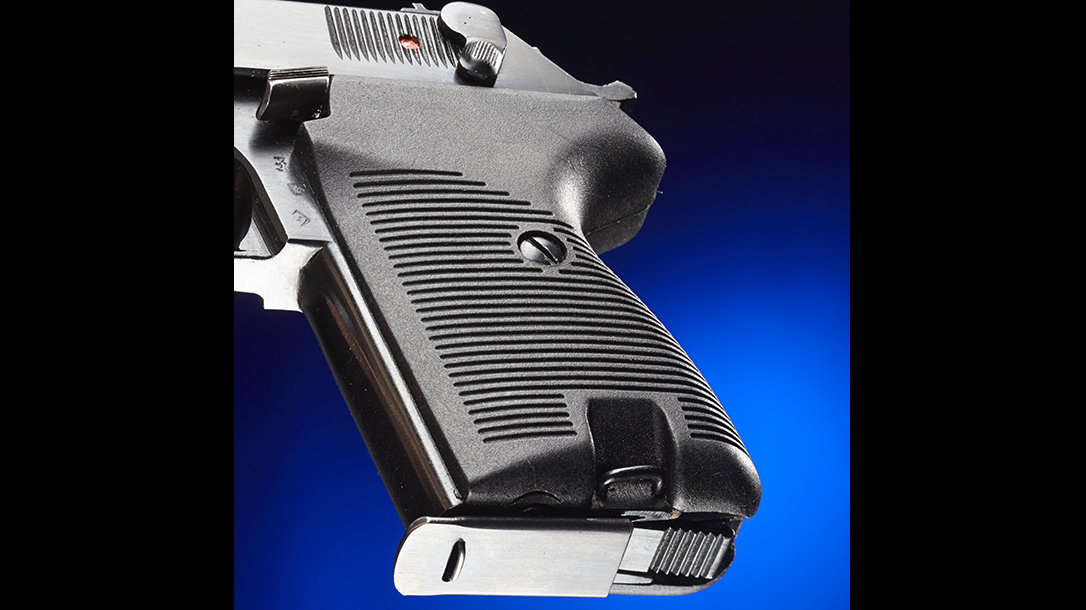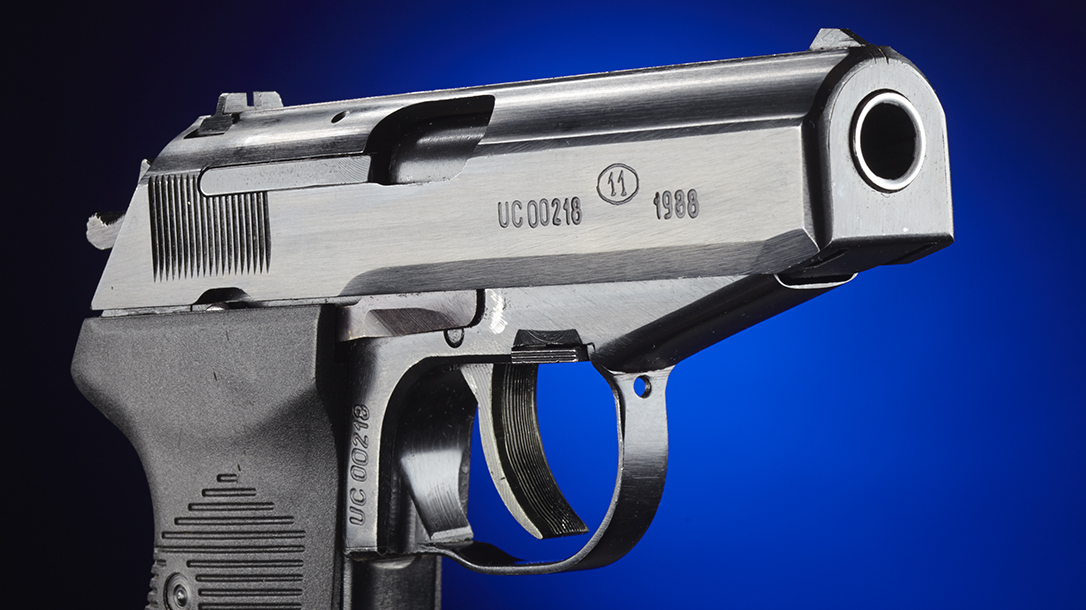Most students of historical firearms are aware of Fabryka Broni Łucznik (Radom) of Poland, a highly respected armsmaker with a storied history. Having established a stellar reputation for quality and innovation in the pre-World War II era, Radom’s firearms are highly respected and sought-after collectibles for enthusiasts and shooters alike. Examples such as the classic wz.35 Vis 9mm pistol exhibit impressive quality and capable design. They combine top-tier design with Poland’s reputation for quality manufacturing.
However, the after-effects of WWII and the beginnings of the Cold War era (and its division of Europe between the spheres of influence of the East and West) would have profound effects upon Polish small arms design and development. The result was a sharp turn eastward in theory and design for Poland’s small arms. Kalashnikov-based rifles consequently became the de rigueur for that nation’s military.
Advertisement — Continue Reading Below
In addition to the adoption and domestic production of 7.62x39mm AK-pattern rifles, Poland also shifted toward a more Soviet-centric focus in the design of its military handguns. The earliest result of this was the adoption of a variant of the Russian Tokarev TT-33 pistol in 7.62x25mm as the Pistolet wojskowy wzor 1948, or “Military pistol, model of 1948,” manufactured by Radom to the tune of more than 200,000 samples. While the pistol was very similar in pattern and design to its Russian forebear, it still exhibited the classic Polish attention to fine detail and quality craftsmanship.
A New Direction
As the decades of the Cold War ground on, Poland began to show an independent streak in its domestic weapons designs. When that nation looked to transition away from the Tokarev pistol and into a new 9x18mm sidearm similar to the Russian Makarov, the country instead developed its own homegrown design. What resulted was the new double-action/single-action (DA/SA) P-64, manufactured from 1966 to 1977.
In design and function, the P-64 is very similar to the classic Walther PPK. It is a compact, all-steel, DA/SA pistol that functions as a straight-blowback design where slide mass and recoil-spring strength work together to keep the action closed until chamber pressure drops to safe levels. The P-64 features a loaded-chamber indicator, clean machining as well as good-quality polishing and finishing on the metal. The single-column magazine of the pistol holds six rounds and features a generous finger-extension floorplate.
Advertisement — Continue Reading Below
While a very successful design, the P-64 also proved to be very expensive to produce. Its complex angles and shape combined with the level of craftsmanship that Radom put into each sample made it prohibitively costly. It also forced the consideration of a replacement design.
As a result, in the 1970s Radom set about developing a replacement pistol that would be cheaper and easier to manufacture. The result was the “Wanad” pistol, chambered for the standard 9x18mm cartridge and adopted in 1984 as the “9mm pistolet wz. 1983”, or simply P-83. “Wanad” in Polish means “vanadium,” a silver-gray metal. However, this does not refer in any way to the materials used in the construction of the pistol, but is merely part of a Polish style of naming convention for its small arms.
A Move To Modernity
While the new P-83 pistol had an overall similar profile to that of the P-64 and would be recognizable as a sibling, it was actually quite different in construction and design. As compared to the more complex and expensive manufacturing approach of the earlier P-64 design, the new P-83 made extensive use of sheet metal and spot welding in its construction.
Advertisement — Continue Reading Below
As with the P-64, the P-83 employs a direct blowback system of operation. In addition, the chrome-lined barrel of the pistol is pressed and pinned into the frame. It features a right-hand twist in the rifled bore. A heavy recoil spring wraps around the barrel, and the pistol has a somewhat small ejection port, behind which a large external extractor that also acts as a loaded-chamber indicator sits. Also, as with the P-64, the Wanad employs a DA/SA system of trigger operation, and the trigger itself is grooved for purchase and constructed from sheet steel.
The pistol features an external hammer with a deeply grooved spur that can be thumb-cocked for a single-action trigger pull. A hammer-drop safety is also mounted on the rear-left side of the slide and features two positions. When in the “up” position, the hammer cannot be cocked and the trigger is locked. If the hammer is cocked when this safety is engaged, the hammer will drop without firing the pistol and the trigger will remain in a rearward position. Disengaging the safety will then allow the trigger to snap forward and the pistol can be fired. If you immediately reengage the safety before firing, the trigger remains locked in the forward position. When the safety is swept down to disengage it, a red dot is exposed. This indicates the pistol is ready to fire.
A Closer Look
As is common on European pistols from this era (and the same as with the P-64), the P-83 features a heel-mounted magazine catch. It is a long, grooved lever. It sits in a recessed portion between the lower rear halves of the synthetic grip panels. An integrated lanyard ring is located at the base of the left-side grip panel, while an additional low-profile ring is located on the base of the magazine.
Advertisement — Continue Reading Below
Where it differs most notably from the P-64 is that it features a slide catch/release lever. Made of stamped sheet steel with integral grooves for purchase, the lever is located at the top forward portion of the left-hand grip panel. It engages the follower of the magazine to lock the pistol open when empty; it can be engaged by the shooter’s thumb to manually lock open the slide. While the P-64 had a 6+1 capacity of 9x18mm rounds, the new P-83 has an eight-round magazine. The steel magazine also has open windows on both sides of the magazine’s body to allow visual access to the amount of rounds on board.
The sights of the P-83 are, as you would expect, very rudimentary. They are black and consist of an integral front blade and a drift-adjustable rear notch. The loaded-chamber indicator is also located on the left-rear side of the slide, above the manual safety and below the rear sight. A serrated sighting plane along the top of the pistol helps reduce glare from sunlight; it also enhances the ability of the shooter to engage the sights. Simple vertical slide serrations are also located on both sides of the rear of the slide.
Disassembly
Disassembly of the P-83 is reasonably straightforward and simple. Engage the safety, remove the magazine and ensure the chamber is empty. Then allow the slide to go fully forward. In addition, located inside the upper forward face of the triggerguard is a takedown release that you pull straight down. Then, pull the slide fully rearward and lift up its rear portion off the slide rails. You then ease the slide forward and clear of the barrel and remove the recoil spring from the barrel.
Advertisement — Continue Reading Below
Cold War Collectible
During the Cold War, this pistol would have been extremely rare in the West, known only to serious collectors. However, with the very different world in which we live today, that fortunately has changed. Recently, large numbers of P-64 and (to a lesser extent) P-83 pistols have been appearing on the surplus market. The prices are also very reasonable. I recently picked up an excellent condition P-83 with matching numbers from Southern Ohio Gun.
The pistol was described as being in “very good” to “excellent” condition; I can find no fault with that description. The pistol I purchased featured an excellent finish with practically no wear marks as well as nearly new-looking grip panels. It came packed in a box with a spare magazine. As noted above, all numbers were also matching on the pistol. As was my experience with a P-64 pistol I recently purchased, the double-action trigger pull was extremely heavy (off the scales of my 10-pound trigger-pull gauge). The single-action pull of the pistol was also a manageable 5 pounds.
Advertisement — Continue Reading Below
As a fan of ComBloc small arms, I was happy to have the opportunity to pick up one of these Polish P-83 pistols.
Polish P-83 Wanad Specs
| Caliber: 9x18mm |
| Barrel: 3.5 inches |
| OA Length: 6.5 inches |
| Weight: 26 ounces (empty) |
| Grips: Synthetic |
| Sights: Blade front, notch rear |
| Action: DA/SA |
| Finish: Blued |
| Capacity: 8+1 |
